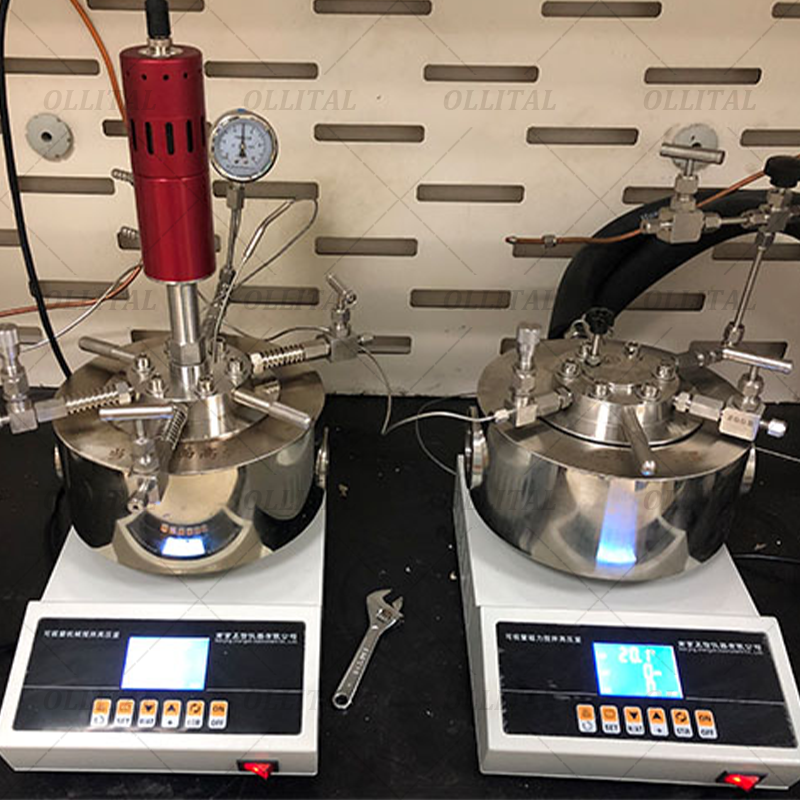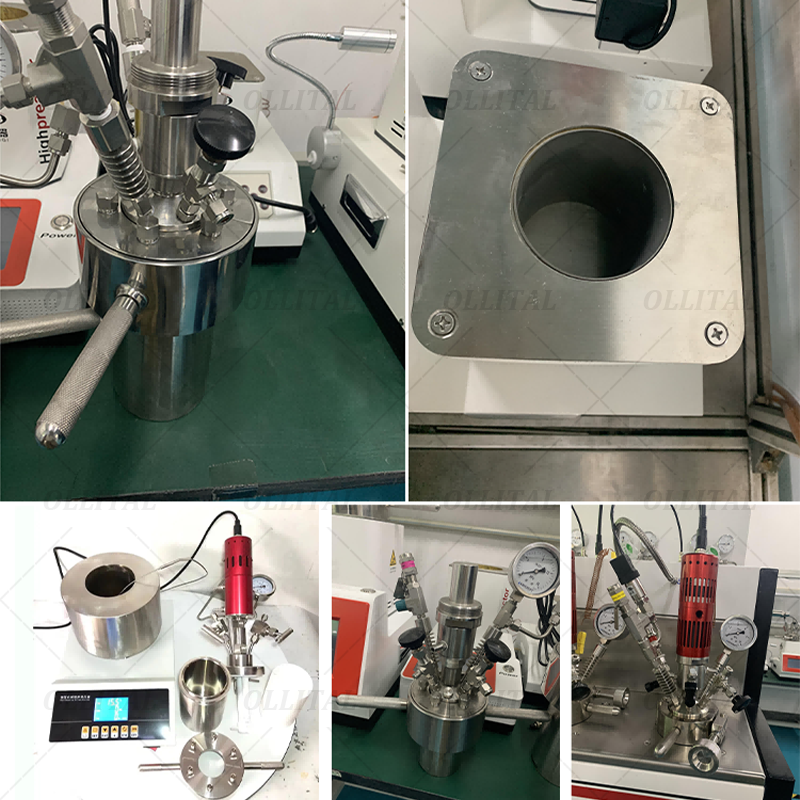As a professional experimental device, the reactor plays a vital role in many scientific research and industrial production. It is designed to handle complex chemical reactions that require high temperatures or pressures. These harsh conditions often significantly affect the reaction rate and product quality, making reaction results that are difficult to achieve under ordinary conditions feasible. Therefore, reactors have become an indispensable tool in chemical product synthesis, drug development, materials science research, and the petrochemical industry. By precisely controlling the temperature, pressure, and other key parameters of reactants, scientists and engineers can achieve a deep understanding of chemical reaction processes and optimize their performance.
Basic structure
1. Kettle body: usually made of high temperature and high pressure resistant materials (such as stainless steel, nickel-based alloy or titanium alloy).
2. Kettle cover: equipped with various interfaces (such as temperature sensor, pressure gauge, sampling port, safety valve, etc.).
3. Sealing device: common ones are O-ring seal, metal seal and magnetic seal to ensure the airtightness of the kettle.
4. Heating system: can be heated by electricity, steam or oil bath.
5. Stirring device: with stirring paddle and magnetic drive device to enhance the mixing of reactants.
6. Cooling system: when the reaction is finished or the temperature needs to be controlled, the temperature is reduced through cooling pipe or external cooling medium.
Main features
The reactor is a kind of equipment specially used for chemical reactions, which has the characteristics of adapting to a variety of complex reaction conditions. The main features are concentrated in its high temperature and high pressure adaptability, strong corrosion resistance, safe and reliable operation mechanism and flexible and diverse operation design, so it is widely used in chemical industry, materials science and other fields.
1. Wide adaptability of working conditions
High temperature and high pressure capability: The reactor can operate under high temperature (usually up to 200°C~500°C) and high pressure (from several MPa to tens of MPa), which is suitable for a variety of special chemical reactions.
Vacuum operation: Some reactors can operate under negative pressure (vacuum) environment to meet the needs of low-pressure reactions.
2. Chemical resistance of materials
High-strength corrosion-resistant materials: The reactor body is usually made of corrosion-resistant materials (such as stainless steel, titanium alloy, nickel-based alloy, etc.), suitable for various acids, alkalis, salts and organic solvents.
Inner lining design: Some reactors use lining materials such as polytetrafluoroethylene and enamel to cope with highly corrosive media.
3. Flexibility of structural design
Multiple sealing forms: The reactor can choose magnetic seal, mechanical seal or flexible seal according to different applications to ensure the airtightness and safety of the reactor.
Multiple interface configuration: The lid of the reactor is designed with multiple interfaces such as thermometer, pressure gauge, sampling port, safety valve, feeding port, etc., which is convenient for multi-functional use.
4. Accurate operation control
High degree of automation: Modern reactors are often equipped with automatic control systems, which can monitor and adjust temperature, pressure, stirring speed, feeding and unloading in real time.
Uniform heating and temperature control: Through electric heating, steam heating or oil bath heating, accurate control and uniform distribution of temperature can be achieved.
5. Excellent stirring performance
Multiple stirring methods: The reactor can choose anchor type, frame type, screw ribbon type or magnetic stirring according to needs to meet the mixing requirements of media with different viscosities.
Efficient mass transfer and heat transfer: The stirring system strengthens material exchange and heat transfer, and improves reaction efficiency.
6. High safety performance
Overpressure protection: Equipped with a safety valve, it can automatically release pressure when the internal pressure exceeds the limit to avoid accidents.
Temperature protection: Built-in temperature control system prevents overheating.
Durable: The kettle is designed with sufficient strength and durability to operate stably for a long time.
7. Multi-purpose adaptability
Various reaction types: Suitable for gas-liquid, liquid-liquid, liquid-solid and catalytic reactions.
Optional scale: From laboratory-scale reactors to giant reactors for industrial production, the specifications are diverse to meet different needs.
Flexible operation: Intermittent operation, continuous operation or semi-continuous operation can be carried out.
8. Efficient use of energy
Energy-saving design: Some reactors are equipped with insulation layers and energy recovery systems to reduce energy waste.
Optimize reaction conditions: Efficiently use temperature and pressure conditions to improve the rate and yield of chemical reactions.
Operation process
The operation process of the reactor varies depending on the specific equipment and purpose, but the following is a general operation process that is applicable to common reactor operations in laboratories and industries:
1. Preparation
Inspect the equipment,Cleaning the reactor body,Raw material preparation
2. Loading
Loading reactants,Seal the lid
3. Start the equipment
Set parameters,Start heating,Start stirring,Inflation or pressure regulation
4. Reaction process monitoring
Real-time monitoring,Regular sampling,Adjust parameters
5. End of reaction
Stop heating and stirring,Cooling and depressurization,Take out the product
6. Cleaning and maintenance
Clean the kettle body,Check the equipment,Record and save
Safety precautions
Slow heating and cooling: avoid sudden changes that may cause damage to the reactor or safety accidents.
Sealing confirmation: make sure that the reactor is sealed before operation.
Overpressure prevention: monitor the pressure in real time and do not exceed the design pressure range of the reactor.
Regular inspection: ensure that the equipment safety devices (such as safety valves and pressure gauges) are in good condition.
By strictly following the operating procedures and safety regulations to use the reactor, you can effectively improve work efficiency and ensure the safety and stability of the experiment or production process.

